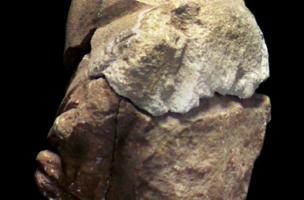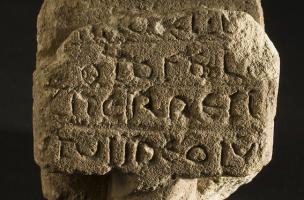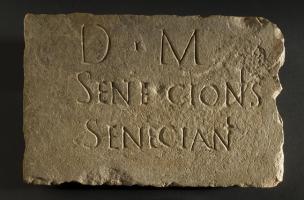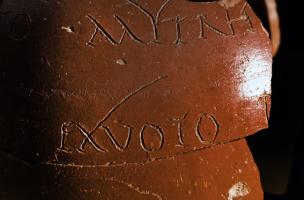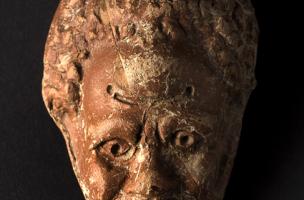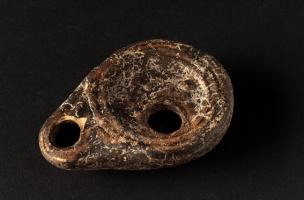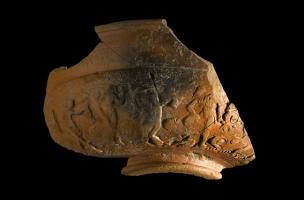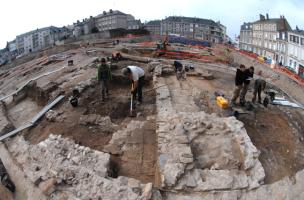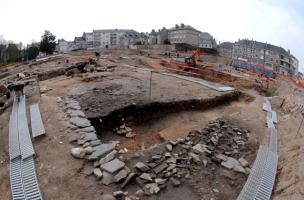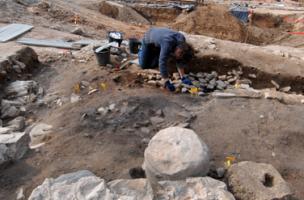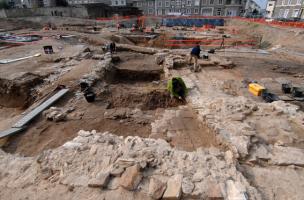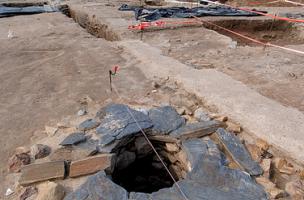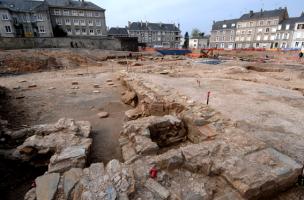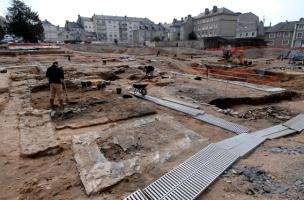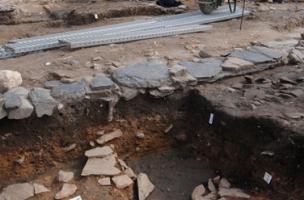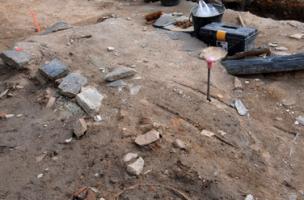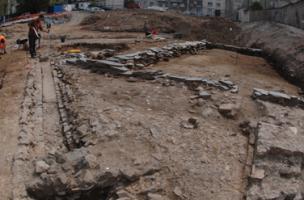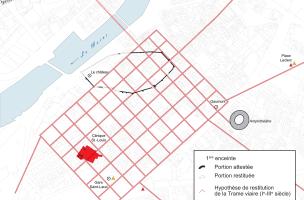You are here
Discovery of a sanctuary dedicated to Mithra at Angers
The excavation of the site of the former Clinique Saint-Louis at Angers, curated by the State (Regional Archaeological Service, Pays d-de-la-Loire), is being carried out by a team of Inrap archaeologists. This site covers an area of 9,000 square metres. At present, the vestiges of a sanctuary dedicated to the worship of Mithra, a god of Indo-Iranian origin is being brought to light.
Mithraism was probably introduced into the Empire by Roman soldiers and eastern merchants and spread at the end of the 1st century AD. This cult of mysteries, reserved to men, attracted first of all the Èlites, then spread to all layers of society. Competing with Christianity it was strongly combated and finally banned by Emperor Theodosius in 392 AD.
An antique quarter
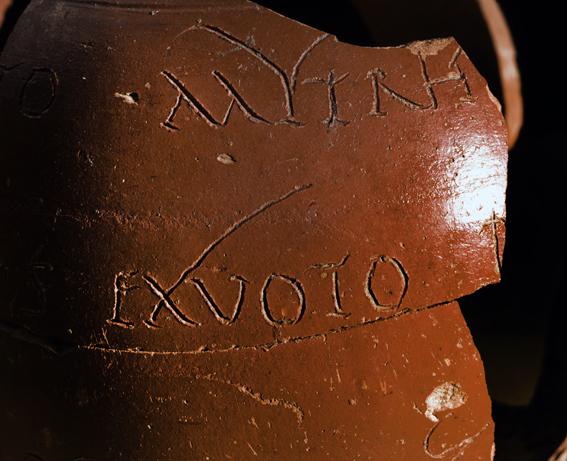
The mithraeum
The goods of the mithræum
On a sigillated ceramic beaker made in the workshops of Lezoux (Puy-de-Dome) there is a dedication, engraved before firing, offered by a certain Genialis in the first half of the 3rd century AD : ´ DEO [INVIC]TO MYTRH[AE]…/…]VS GENIALIS CIVES MA […]VS EXVOTO D[…/…]RIBVS OMNIS LOCO OMNIS (…): To the unvanquished Mithra, ,]us Genialis , citizen of … has offered an ex-voto (this vase).
A fragment of worked freestone, decorated with palmettes, has a cartouche with a four-line inscription in Greek that has been in part deciphered. It indicates a dedication by a certain Theophilos of eastern origin for the benefit of Retituitos, a name of Gallic consonance.
The richness of the findings, the conservation of the vestiges, the importance of epigraphy, the absence until now of a discovery of any mithrÊa in the west of France, offer to the Inrap archaeologists perspectives of original research concerning the fields of archaeology, of art history and of religions.
This discovery opens new perspectives for the history of Angers and early Christianisation in the fourth century. After Bordeaux, Strasbourg, Biesheim, Septeuil, Tirlmont (Belgium), Martigny (Switzerland), Rome and Ostia, Angers henceforth takes its place in the limited inventory of the mithrÊa known in Western Europe.
Mahaut Tyrrell
Media communication
Inrap, media partnerships and relations department
+33 (0)1 40 08 80 24
mahaut.tyrrell [at] inrap.fr
Mélanie Scellier
Cultural development and communication
Inrap, Direction interrégionale Grand Est sud
+33 (0)6 86 28 61 71
catherine.dureuil [at] inrap.fr


